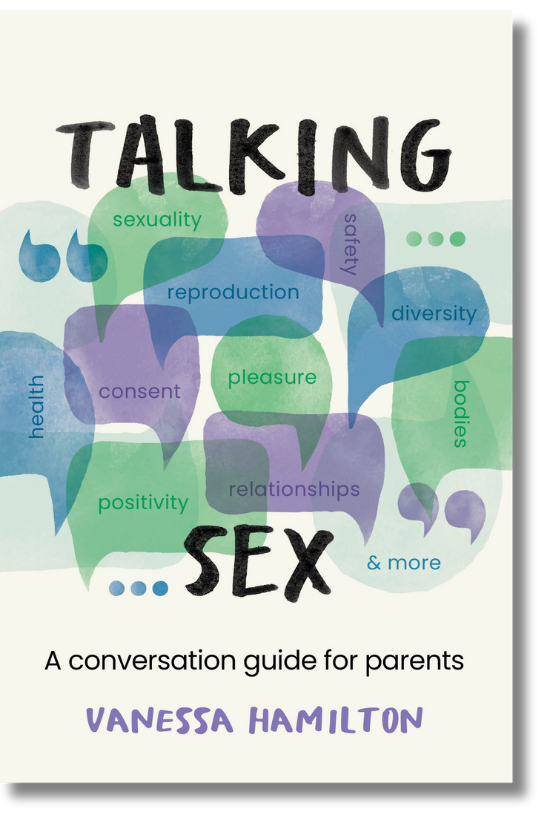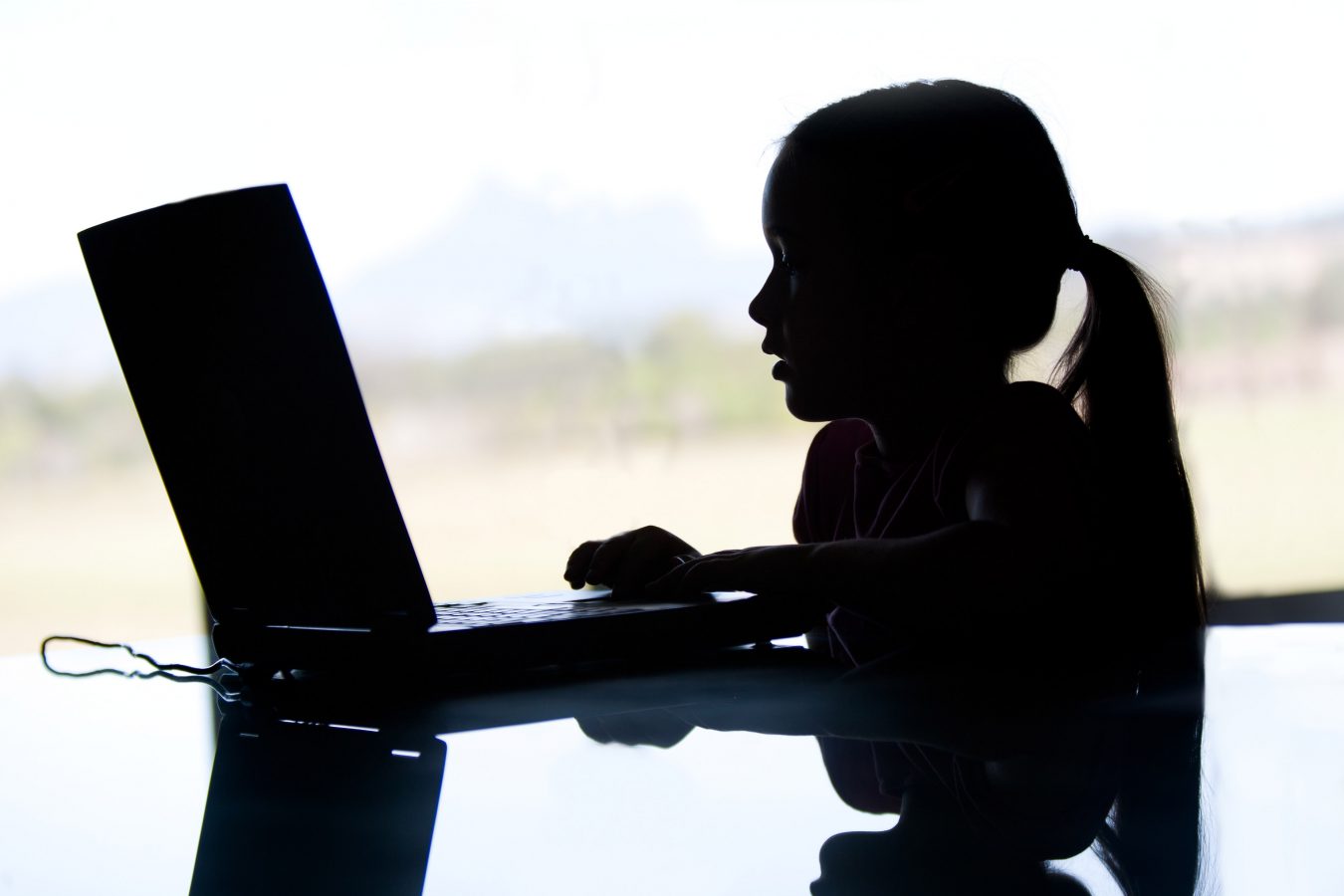
Preparing for the respectful relationship chat? Need help with broaching the online aspect? In this extract from her new book, sexuality educator Vanessa Hamilton shares practical tips to empower parents to have these conversations.
We would all agree that ensuring the health and wellbeing of children and the prevention of harm is a crucial responsibility for parents. We teach road safety, water safety and body safety, but are we keeping up with the increasing use of technology and the internet, and children’s exposure to various online risks such as cyberbullying, online predators, identity theft and exposure to inappropriate content?
Children are digital natives. They have been exposed to digital technologies since birth and are the most frequent users of emerging tech. Technology is embedded in their lives and this naturally has consequences when it comes to their sexual health and wellbeing. According to the Organisation for Economic Cooperation and Development (OECD 2019):
Spending time online is associated with both potential risks and rewards. Children are afforded opportunities for self-expression, learning and consolidating friendships … on the one hand, while being online also exposes children to risks such as harmful content and cyberbullying on the other.
In my experience too many children are currently unprotected from the online world. I hear so many stories of exposure to content such as online pornography that absolutely could and should have been prevented by parents and caregivers.
I recently saw an advertisement about sextorsion, showing multiple strangers walking into a house through the wide-open door, up the stairs and into the bedroom of a teen on their laptop. The message to parents was that you wouldn’t allow these people into your house, but you are potentially allowing them into your child’s online world — by not teaching children how to stay safe on the internet; by not checking their online activity or not installing safety blocks and other strategies. The child in the advertisement eventually sought their parents’ help when they saw something concerning on their device. Would your child come to you? Make sure you and your children are familiar with Australia’s excellent eSafety Commissioner website for support.
One of the things I have always done in our house when my kids have other kids sleeping over is request all phones be put on chargers in the kitchen in the evening and left there overnight. Obviously this rule has not always been popular with the kids (especially mine and especially as they become older), but prioritising child safety is not a popularity contest. I am horrified to hear how often parents allow phones in young children’s bedrooms — let alone at sleepovers.
It’s natural, healthy and typically expected that young people will be interested in bodies, sexuality and relationships. Young people’s sexual practices increasingly include incorporating rapidly evolving digital technologies as part of their social connections. Digital sexual activity has similar levels of complexity as physical in-person experiences including such things as laws, emotions, feelings, pleasure and potential harm. Many digital practices such as sending nude images as a way of flirting are seen by many young people as an expected part of dating. We should expect that our young people may participate in these activities when they become sexually active.
However, also keep in mind that as parents we often teach kids what not to do — don’t rape, disrespect, coerce, share images or watch porn. But we haven’t usually given them an alternative — what to do when it comes to respectful relationships that are mutual, joyful, pleasurable, fun and awesome.
Sexting and nudes
Sexting or sharing nudes (sexual photos, messages or moving images) is commonly seen by young people as ‘normal’ — a consensual, safe and often enjoyable aspect of their intimate or social relationships and interactions. A recent large Australian study of students in Years 10 to 12 reported that 86.3 per cent had received sexual messages or images and 70.6 per cent had sent sexual messages or images (Power et al. 2022). Young women and LGBTIQA+ young people were more likely to send or receive sexual images or messages than young heterosexual men.
Close to half (47.9 per cent) of the young people surveyed reported that on at least one occasion they had been sent a sexual or nude image that they had not asked for. Close to one in three (29.4 per cent) reported that they did not want to receive the image they received. Close to one in five (17.8 per cent) reported that sexual photos of them had been shared without their permission at least once; young women (20.6 per cent) and trans and non-binary young people (18.6 per cent) reported higher rates of this than young men (11.3 per cent). When asked about how they felt about receiving these images, young people were more likely to report positive emotions than negative ones. Young men were more likely than young women or trans and non-binary young people to report these positive emotions.
Young people may engage in sexting and sharing nudes as a way of connecting in romantic relationships and building self-confidence. Like with any sexual activity, they are exploring their sexuality, bodies and identities, but in a digital way. However, sexting can be associated with risk and harm such as images being shared without consent, legal implications, mental health impacts and potential connections between sexting and other risky behaviours. As with any sexual practice, young people deserve education, facts and support with decision-making skills in order to have safe, healthy, happy, legal and consensual sexual experiences.
Young people are novices when it comes to sexual experiences. They are learning and experimenting, which can naturally lead to mistakes being made, or choices that they won’t make again in the future because they learned that it didn’t go well or they didn’t like it. But a mistake related to sexting can often have a big impact and long-lasting effects. Young people deserve to be alerted to the potential risks and consequences of sending nudes as part of their learning and decision-making processes.
As always, sexuality education around sexual activities and relationships should lead with positivity, and should focus on pleasure as well as harm minimisation. It should provide knowledge of potential harm and risks to allow for informed decision-making. A zero-tolerence approach (especially to a common practice) is likely to deter the child from speaking up when they need help. The Youth Law Australia website, will help you familiarise yourself with laws around the sharing of nude images and sexualised content.
Conversation starters
- How would you feel if someone asked you to send an image and you didn’t want to?
- How would you feel/what would you do if you received an unwanted nude? Let’s find a quirky image you can use to send back each time.
- Do people at school send nudes mostly for fun and to flirt or to annoy/shock others?
- Among the kids at your school, is it usually the sender’s idea to send the photo, or is it more often that someone persuades them to?
- Do you have any questions about things you’ve heard? I’m always here for you if something goes wrong.
- I think you’re mature enough to talk about this now.
- I’m glad I saw this. You are not in trouble but you do need some help and advice so you might make different decisions next time.
- Does your new phone take good photos? Do you know what a digital footprint is? I’ll text you a link to the Youth Law Australia website so you can be clear about what can result in criminal charges when it comes to photos.

About the book
Vanessa Hamilton is a Sexuality Educator and parent of three wonderful teens. She is the founder of Talking The Talk Healthy Sexuality Education, working as a highly respected and sought-after speaker, author and educator. Vanessa has spoken to tens of thousands of people about sex and sexuality during her 25+ years of experience as a Sexual Health Nurse.
This is an edited extract of Talking Sex: A Conversation Guide for Parents by Vanessa Hamilton and is published by Amba Press, published September 2023, RRP $29.95.
Stay up to date with our newsletter here

